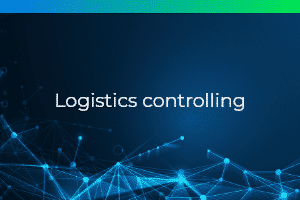What is logistics controlling?
Logistics controlling: how to ensure logistics management objectives are met
The terms procurement management and logistics controlling are closely linked, as the latter is part of the overarching management task. The aim is to continuously monitor the achievement of planned values and, if necessary, to adjust them accordingly. production depths, throughput times or the scope of the range of parts in order to enable efficient processes. However, logistics controlling is also a superordinate area that aims to plan, control and coordinate all sub-areas of operational logistics.
Definition of logistics controlling
How efficiently or economically does a company operate with regard to logistics? Logistics controlling provides answers to this question, as it involves permanently monitoring the efficiency of individual processes and identifying potential savings (including rationalization). Logistics controlling is essentially based on cost and performance accounting, based on a canon of key figures that differ from company to company.
Note: Logistics controlling primarily assumes the role of an early warning system by focusing on the key performance indicators, which can be used to identify changes at a granular level and thus map cause-and-effect chains. Which key figures are selected, how they are defined and how their function or importance is assessed depends on the relevance of logistics processes for the company itself or the degree of organization in general.
Logistics controlling reveals need for action
There are various instruments that can be used to set up and implement logistics controlling. However, these are often not used individually, but are part of a toolbox that includes an ABC analysis, break-even analysis or value analysis. The guiding principle when setting up logistics controlling is always that certain costs are allocated to each individual work step. This applies not only to the sub-areas of logistics themselves, but also explicitly to interfaces between these areas – processes in sub-area A influence efficiency in sub-area B, which in turn can influence aspects of sub-area C.
The task of logistics controlling is therefore to monitor the functional areas of operational logistics holistically in order to identify irregularities or deviations from the norm, to present processes transparently and to be able to take measures to rectify issues or increase efficiency.
By assigning a cost value to each aspect, a better understanding of the relevance of throughput times, stock levels or general delivery readiness is also created.
